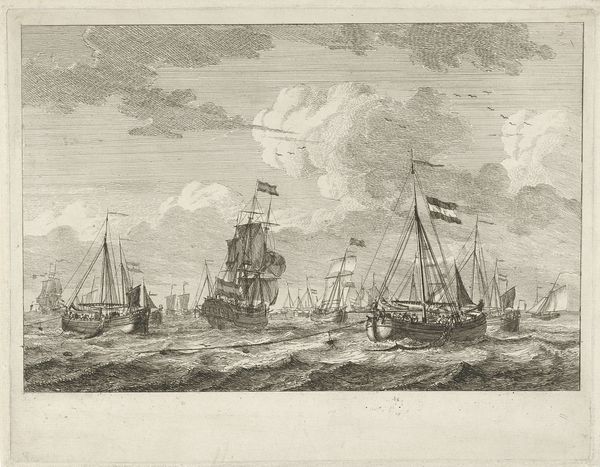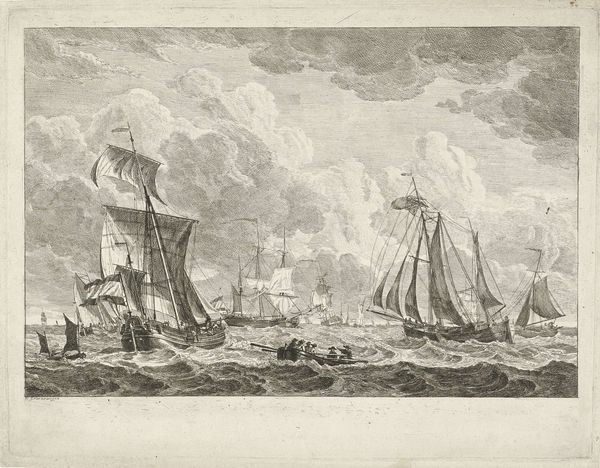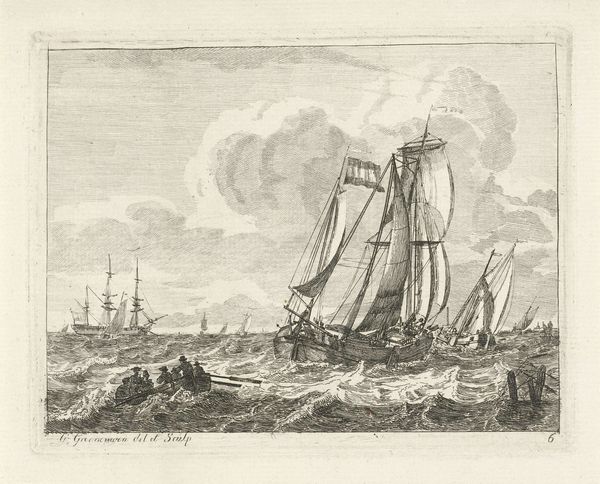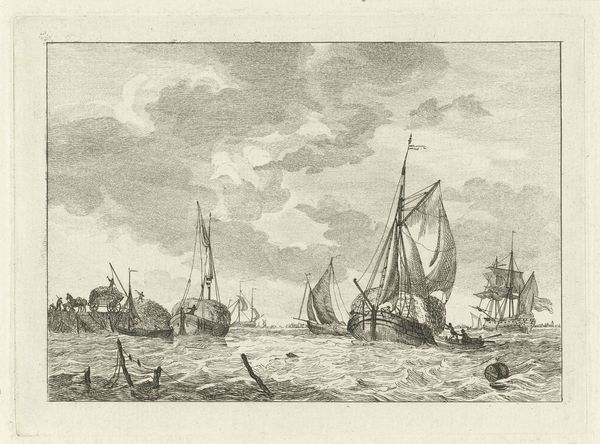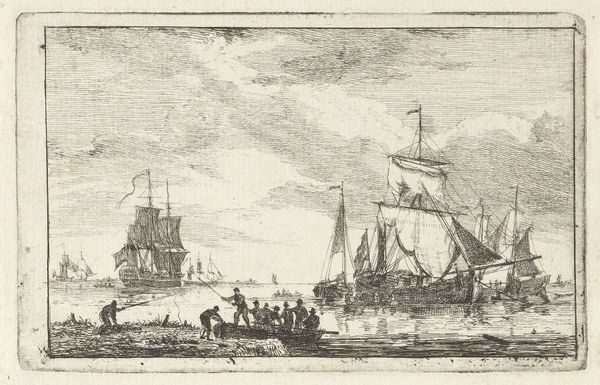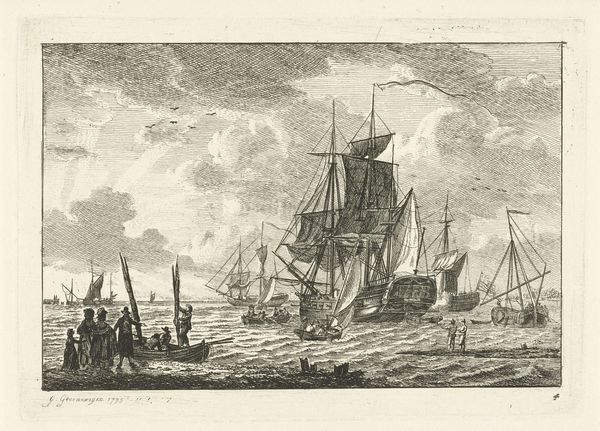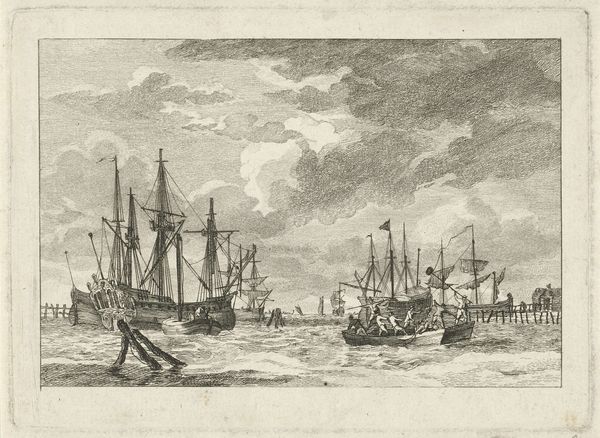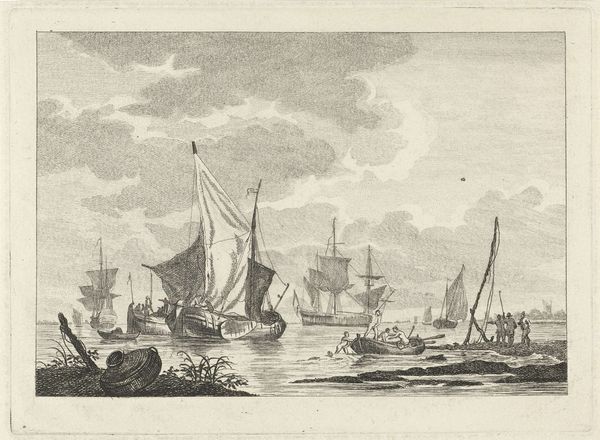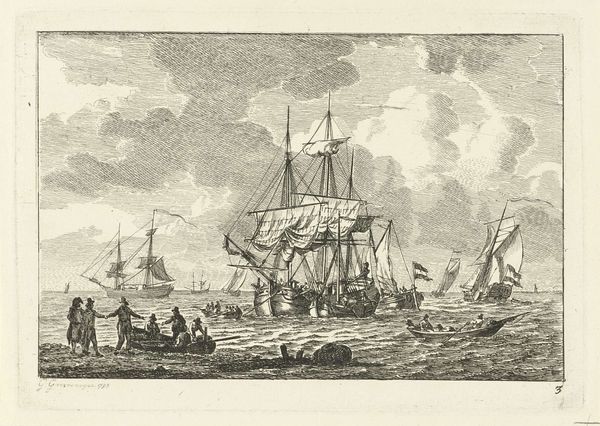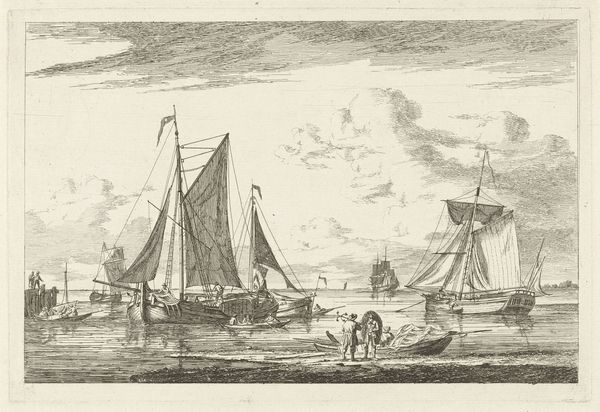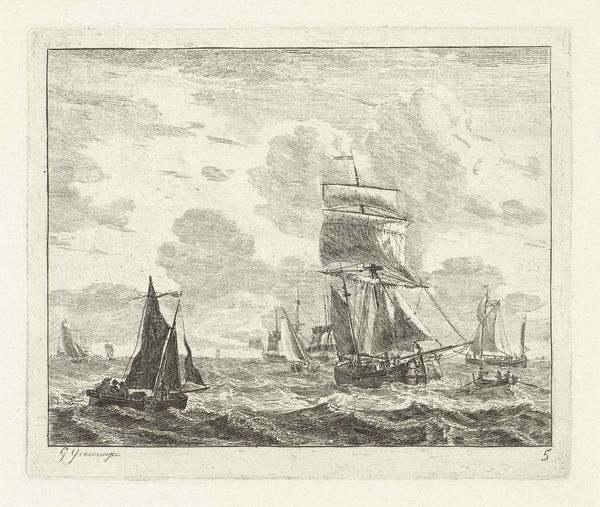
Dimensions: height 228 mm, width 299 mm
Copyright: Rijks Museum: Open Domain
Curator: This etching, “Uitvarende schepen bij Vlaardingen,” or “Ships Departing near Vlaardingen,” comes to us from Gerrit Groenewegen, and it is dated somewhere between 1764 and 1826. Editor: It's strikingly active; the way the water is rendered, almost teeming with little figures ferrying out to those majestic ships. Curator: The hustle captured here evokes questions about labor, specifically maritime labor during this period. Consider Vlaardingen’s history: it was a significant herring fishing port. How do we interpret the romanticism of the ships against the backdrop of a physically demanding profession, one that sustained an entire community? Editor: Herring shaped so much, didn’t it? Its abundance meant more people fed and fuelled global exploration. Thinking about materials and process here, the copperplate etching captures this bustling maritime industry with astonishing detail; those thousands of lines would have required skill and, crucially, time, connecting to the whole question of how this kind of scene would then reach a consumer, connecting them to Vlaardingen and its workforce. Curator: Exactly! The print becomes a document, framing the narrative around maritime dominance and class structures. Where are the fisherfolk in this idyllic scene? Whose stories are being marginalized or completely erased to enable the fantasy that’s offered up by this harbor view? We should also be discussing Groenewegen's other works that examine this precise intersection, the day-to-day labor versus romanticized themes. Editor: And don’t overlook how an etching functions materially in the context of image-making at this time, the rise of print and image culture – each strike of the press helps proliferate narratives around Dutch global trade. Curator: Seeing it this way demands we acknowledge the complexities, not just the beauty of the ships sailing out. How images like these influenced perceptions, or even justified inequalities is important to understand. Editor: You're right, it's about making visible the layers of context, both how this print comes to exist as a material object in this period and what is it is ultimately depicting. It reminds me of a time when production relied heavily on maritime endeavors.
Comments
No comments
Be the first to comment and join the conversation on the ultimate creative platform.
